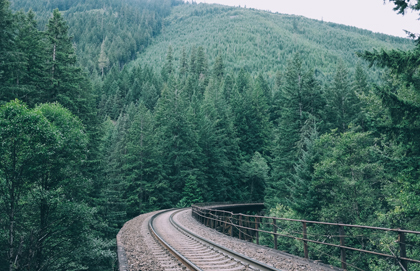A few weeks back I wondered whether the dominant theme of Canada 150 – a nation built on nastiness to Indigenous peoples – might work to the practical detriment of Canada’s aboriginal communities.
Denunciations of the past are easy to make. Building in the present is rather more difficult. If it is possible to demonstrate one’s Indigenous bona fides by denouncing what others did a long time ago, why not opt for that rather than doing something constructive, but arduous, today?
News arrives from Manitoba that makes the point so perfectly as to be hilarious. Prime Minister Justin Trudeau, who wears his Haida on his arm, was out on the sort of routine foreign visit that prime ministers from Montreal make to western Canada.
A pressing issue in Manitoba is the Hudson’s Bay Rail Line to Churchill, which was rendered inoperable by flooding in May. The rail line is the only way into Churchill on the ground, and since it went out a few months ago, prices of food and other necessities have skyrocketed as they are now brought in by air. Churchill has about 900 residents, the majority of which are aboriginal.
On July 18, the company that owns the railway, OmniTRAX of Denver, Colorado, said that the rail line can be repaired before October – when construction season ends in the north – but at a cost of about $60 million. The company is not prepared to put that sort of money into a rail line that already loses money.
OmniTRAX argues that the Churchill line is no longer commercially viable, but is really a public utility, like highways in remote areas, and so the government and First Nations ought to put up the cash. The government says that OmniTRAX ought to fix the line itself. It argues that when the Chretien government sold the line to OmniTRAX in 1997 – it was a public utility then – the private company assumed the obligation of maintaining it.
Over the years, both federal and provincial governments have put millions into the line and the related port on Hudson’s Bay, so OmniTRAX may have corresponding legal obligations. However, given that service on the Churchill line was already cut back last year, and the related port closed, it is not clear – absent lengthy litigation – who is obligated to do what.
It is entirely possible that OmniTRAX is engaging in the venerable practice of private sector extortion – raised to an art form by Canada’s auto companies and Bombardier – of threatening all manner of calamities, to be forestalled only by a generous disbursement from the Crown exchequer. Even so, if the company doesn’t want to do the repairs, it is hard to see how it could be done soon, if at all, absent government money.
Enter Prime Minister Trudeau, who took a tough line. The CBC reports:
“Omnitrax has legal obligations to clean up and repair the tracks,” Trudeau told a news conference at Winnipeg’s Assiniboine Park Saturday morning. “This is a responsibility that is squarely on the shoulders of Omnitrax. I had a very productive conversation with Premier Pallister this morning, where we agreed that Omnitrax needs to be held to account and that we need to act to support the people of Churchill.”
What’s that about Assiniboine Park? An odd place for a news conference, no? CBC continues:
Trudeau’s comments came following an announcement that the federal and Manitoba governments will contribute a combined $50 million toward Canada’s Diversity Gardens at Assiniboine Park. The federal government will kick in $35 million toward the project, Trudeau said. Manitoba Deputy Premier Heather Stefanson announced the province is contributing $15 million. The City of Winnipeg has previously committed $10 million for the project. The $75-million gardens are scheduled to open in 2019.
Something called Diversity Gardens is beyond parody, but the official website provides this auto-satire:
Throughout the four cornerstones - The Leaf, The Indigenous Peoples’ Garden, The Cultural Mosaic Gardens, and The Grove - an exploration of the human connection with plants and nature will showcase our nation’s extraordinary multicultural heritage. Visitors will discover the role plants have in shaping the life and identity of their community and their country – past, present and future. Interpretive themes explored throughout Canada's Diversity Gardens include: food and drink, health and wellbeing, beauty and expression, spirituality and consciousness, and sustainability and conservation.
Whether the rail line is fixed or not, Churchill’s aboriginal residents will be pleased to know that, catching a flight to Winnipeg, they can look with pride upon Canada’s horticulturalism while meditating in the Indigenous Peoples’ Garden.
In a nice bit of symmetry, the government contribution to the multi-horti-cultural initiative will come in at $50 million of a $75 million project. Likely OmniTRAX massaged their figures to arrive at a similar number; perhaps they could get cost sharing for their $60 million repair job on similar basis?
In Canada’s sesquicentennial year, the imagery is too perfect. The first great project of the new Dominion of Canada was to build the railway to unite the four original provinces of Confederation with British Columbia, which joined up in 1871. Now, 150 years later, the line to Canada’s north, and only Arctic port (though now defunct), cannot be maintained, but the Diversity Gardens is set to bloom.
The Hudson Bay Rail Line was built in the 1930s, when Canada was not even half as old as it today, and when practical development, not horticulturalism, ruled the day. What a nasty age that must have been.
Convivium means living together. We welcome your voice to the conversation. Do you know someone who would enjoy this article? Send it to them now. Do you have a response to something we've published? Let us know!





